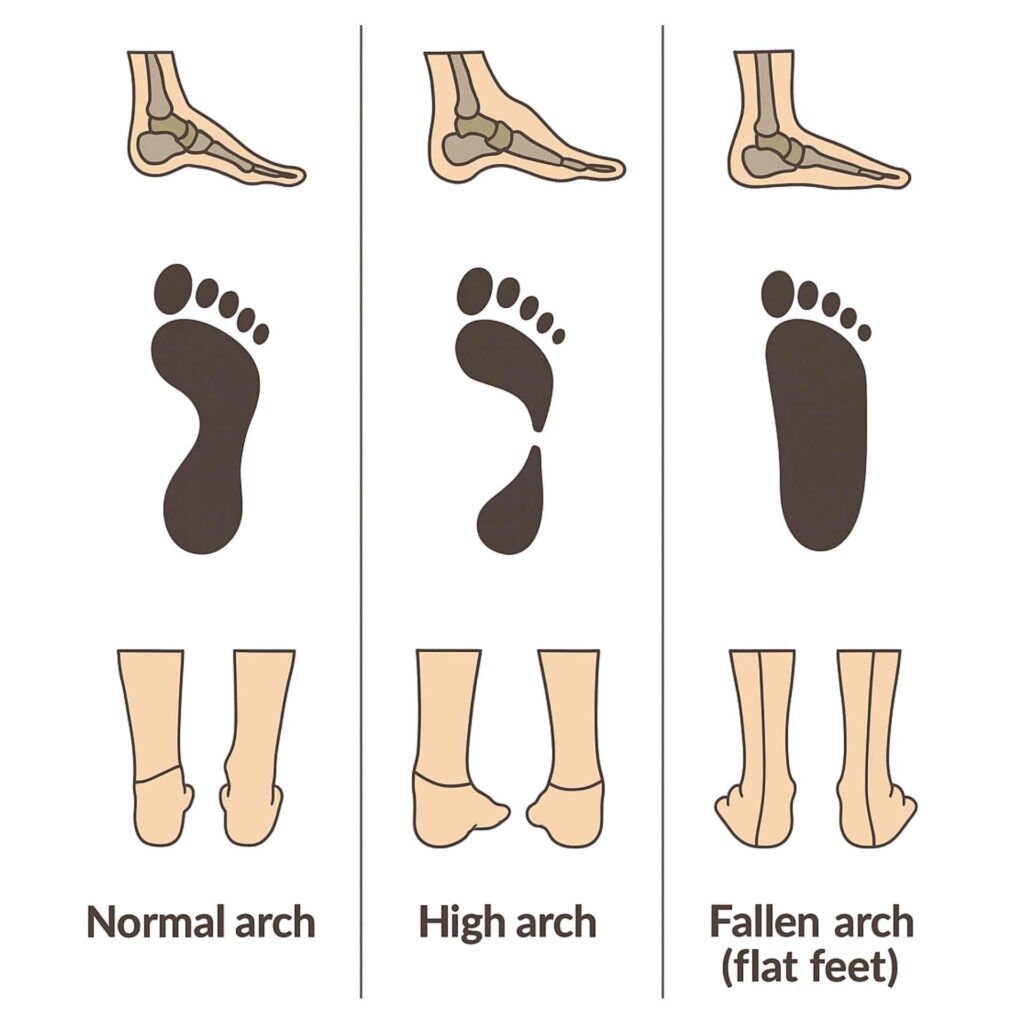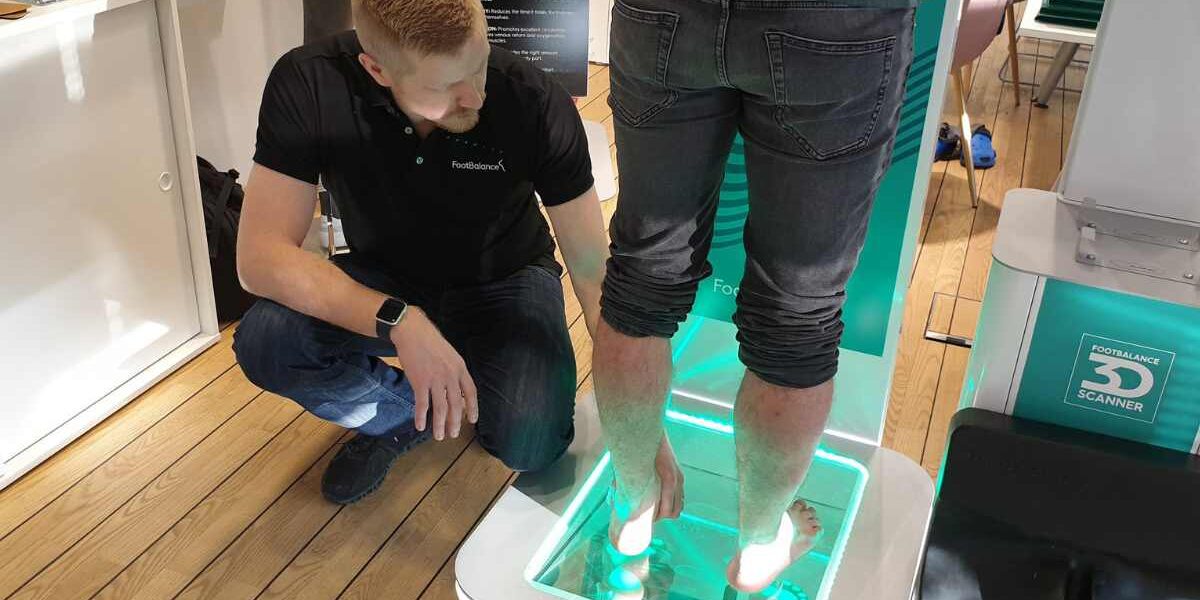Your feet are the foundation of your body — and the arch structure plays a major role in how you move, balance, and absorb impact. Knowing your arch type helps identify the root cause of pain or discomfort in your feet, knees, hips, or even lower back.
✅ Normal Arch
-
The foot has a natural, moderate curve.
-
Weight is distributed evenly, providing good balance and shock absorption.
-
Usually needs minimal support, but custom insoles can enhance comfort and alignment for active individuals.
🔼 High Arch (Cavus Foot)
-
The arch is raised higher than normal.
-
Pressure is concentrated on the ball and heel of the foot.
-
Common symptoms: pain, instability, ankle strain, and frequent foot fatigue.
🔽 Fallen Arch (Flat Foot)
-
The arch collapses or is very low, causing the entire sole to touch the ground.
-
Leads to overpronation (foot rolls inward), affecting posture and gait.
-
Common symptoms: heel pain, shin splints, knee pain, or lower back discomfort.

Foot Types and Arches
How FootBalance Custom Moulded Insoles Can Help
FootBalance insoles are individually moulded to your feet to correct alignment and support your natural arch type.
-
For Normal Arches: Helps maintain balance and prevent fatigue during long standing or sports.
-
For High Arches: Provides cushioning and even weight distribution to reduce pressure on the heel and forefoot.
-
For Fallen Arches: Offers structured support to lift and stabilise the arch, improving foot alignment and reducing overpronation.
Result? Better posture, reduced strain on joints, and enhanced overall comfort.
How Footfixe Physios Help You Relieve Pain
At Footfixe, our physiotherapists take a holistic approach:
-
Comprehensive Foot & Gait Assessment – We analyse your foot structure, walking pattern, and pressure points.
-
Personalised Treatment Plan – Targeted exercises, manual therapy, and mobility work to relieve pain and improve function.
-
Custom Insoles Integration – FootBalance insoles are moulded and adjusted under physiotherapist guidance for the perfect fit.
-
Education & Prevention – Learn proper footwear choices, stretching, and strengthening routines to prevent recurrence.
With the right assessment, insole support, and physiotherapy care, you can walk, run, and move pain-free again






